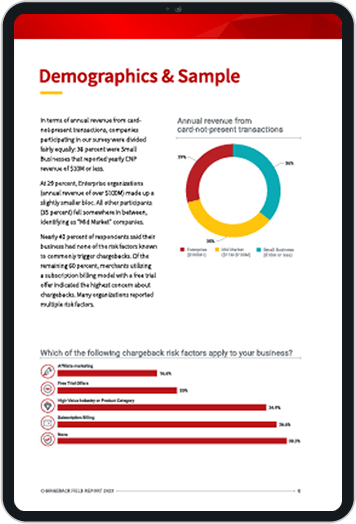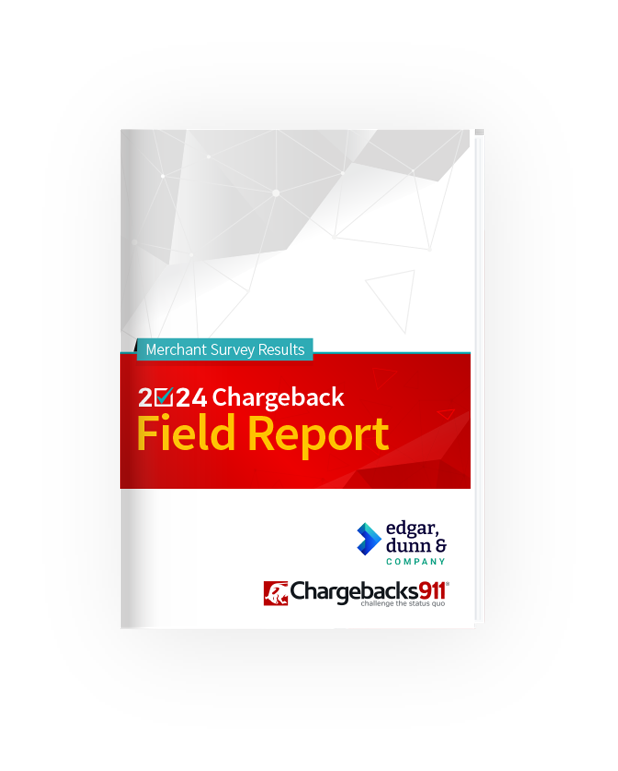Payment Trends: Where Payment Processing is Going (& What We Need to Look Out For)
The world is being reshaped by new technologies every day. Payments processing is no exception.
Merchant and consumer preferences for digital payment options drives demand for faster, smoother, and more secure ways to pay. The payments industry has to evolve in order to meet that demand. The trick is to see what changes are coming before they happen.
There’s no way to know for sure where we’re heading. But, we can look at our current situation and make some educated guesses.
Today, we’re taking a peek at new and developing payment processing trends. We’ll explore what industry experts project will happen this year, how technology is impacting payments, and what retailers can expect over the next decade.
Recommended reading
- Merchant Identification Numbers | How Do MIDs Work?
- Why is My Bank Account is Under Investigation?
- Issuer Declines: 7 Reasons They Happen & How to Fix Them
- What is an Issuing Bank? The Issuer's Role in Payments
- What is an Acquiring Bank? The Acquirer's Role in Payments
- How Debit Payment Processing Works: Costs, Rules, & More
#1 | The Impact of AI on Payment Processing
If there is one game-changer that will unmistakably affect payments over the next few years, it would have to be the expanding role of artificial intelligence, or AI.
The impact can already be felt throughout the payment processing chain. AI can help by making payments seamless, taking place in near-real time without direct user action.
Look at the in-person checkout experience. AI, combined with biometric confirmation devices, have the potential of rendering the traditional retail checkout process obsolete. Simple and automatic payments, in turn, could help increase purchase volume by removing friction.
Online payments could be streamlined by AI, too. It can optimize payment routing, automatically selecting the most efficient way to run a transaction. For fraud detection, AI can analyze vast amounts of data and identify suspicious patterns and transactions, enabling real-time protection.
AI can also provide invaluable assistance with compliance procedures like Know-Your-Customer (KYC) mandates. This will help ensure that fewer payments get refused due to lack of validation.
#2 | Widespread Use of Digital Wallets
Contactless payments and digital wallets are now the norm for in-person shopping. Data from Capital One shows that more than half of Americans now use digital wallets more frequently than conventional credit or debit cards. Digital wallets are expected to be the standard payment choice in the US within five years.
This is not just isolated to the US, though. According to a report by Juniper Research, over two-thirds of the global population will own a digital wallet by 2029.
In the near future, digital wallets will offer a wider range of innovative features than current products. Faced with increased competition, providers will need to brand their eWallet apps and incentivize consumers through features and deals.
While still considered an alternative payment method, digital wallets still require the consumer to have an active credit or debit card.
#3 | Hyper-Personalized Payment Options
The key word going forward is “personalization.” Your phone is effectively a storehouse of your identity, which presents a rare opportunity to offer consumers a highly personalized payment experience.
We’re talking about a much wider range of built-in features that help encourage loyalty. AI-driven systems, for example, could manage payments and subscriptions, anticipate purchases, and automatically process payments based on user preferences.
Greater interconnectivity between financial institutions means a customer’s identity could be validated in advance of a purchase. The result would be simplified processing, producing a faster, easier, and more secure transaction for all.
Traditional banks may also play a lesser role in payment processing due to “neobanks,” or digital-only financial institutions that are typically fintech companies, not traditional chartered banks.
#4 | Enhanced Payment Security
As digital payment methods supplant other types, more robust protection solutions will be critical.
While still effective for now, security measures such as tokenization and advanced encryption are past their prime, according to experts. The next decade will see an intensified push toward developing more sophisticated ways of fortifying digital payment ecosystems.
Passwords, user names, and other current forms of authentication will eventually be eliminated. Traditional encryption will be replaced by quantum-resistant cryptography. AI-powered fraud prevention will stop cyberattacks before they occur. Every transaction will be instantaneously verified and secured using digital identities.

#5 | Increased Regulation & Compliance Challenges
Like most other rapidly evolving technologies, electronic payment processing has matured much faster than the laws that govern it. That’s not an easy fix.
Globally, governments and regulators have proposed, adapted, and effected scads of new guidelines and mandates. Unfortunately, these are often haphazard patchworks of rules designed to solve specific issues rather than support a comprehensive strategy.
No one seems to be coordinating efforts. Even when players agree there should be stricter rules, it typically takes institutions months or years to draft, standardize, and implement new regulations.
Nevertheless, I foresee an overall movement toward more standardized rules for automated payment processing. The only thing that’s unclear is whether it’ll be enacted through government intervention, or put in place by the payments industry itself.
#6 | The Rise of Embedded Financial Solutions
Merchants are embracing tools like embedded lending as a way of increasing the appeal of their products. Many of these offerings threaten to totally upend conventional payment processing.
The buy now pay later concept is a good example. Service providers like Klarna break purchase amounts into multiple payments to simplify financial management for the consumer. Merchants benefit from higher sales along with faster, easier processing.
BNPL services are already integrated into the checkout processes of thousands of eCommerce merchants. I expect that we’ll see use spread soon to peer-to-peer sales sites like eBay, or even into everyday platforms such as Facebook.
The embedded lending market is expected to experience significant expansion over the next decade, reaching $690.4 billion in 2030. A number of banks and other fintech services already plan to invest heavily in developing embedded financial offerings they can brand as their own.
#7 | Adoption of Central Bank Digital Currencies (CBDCs)
The adoption of central bank digital currencies (CBDCs) promises faster, more secure, and more transparent transactions.
CBDCs give central banks the power to set a digital medium of exchange that eliminates intermediaries. The effect: reduced transaction costs, near-instant settlements, and greater financial inclusion, particularly in underserved populations without access to traditional banking.
The programmability of CBDCs could also open the door to new and innovative payment features, like automated smart contracts. This would streamline complex processes like cross-border transactions.
Widespread implementation will mean overcoming challenges related to privacy, cybersecurity, and infrastructure upgrades, though. These moves will be necessary if we’re going to ensure seamless integration into the existing payment ecosystem.
#8 | Cross-Border Payment Innovations
New global payment networks like SWIFT GPI and FedNow promise to significantly enhance the speed, transparency, and accessibility of the average interbank payment.
SWIFT GPI has already improved cross-border transaction efficiency by enabling real-time tracking and faster settlement times. Meanwhile, FedNow is set to modernize domestic payments in the US by offering continuous, 24/7 instant payment capabilities.
Faster payment networks like these will accelerate innovation in the payment space, boosting global commerce and inclusivity for underserved markets. But, like any major overhaul, there are some caveats. Financial institutions have to adapt to evolving infrastructure requirements, heightened cybersecurity demands, and regulatory changes to ensure secure and seamless integration.
#9 | DeFi (Decentralized Finance) Solutions on the Way
The best-known use case of blockchain (or decentralized ledger) technology is cryptocurrencies like Bitcoin. But, there are other applications for decentralized finance.
DeFi enables secure, traceable transactions without relying on intermediaries, reducing fees and settlement times significantly. It could open the door to faster, more transparent, and more cost-effective alternatives to traditional finance. Utilizing
DeFi platforms are further expanding accessibility by creating open financial ecosystems that operate 24/7, facilitating cross-border payments and financial inclusion. Over the next ten years, we can expect a surge in the adoption of blockchain-based payment systems, driven by increased consumer demand for transparency and efficiency.
Challenges on this front include regulatory uncertainty, scalability concerns, and cybersecurity risks. All of these roadblocks need to be addressed before we can fully unlock the potential benefits of DeFi in payment processing.
#10 | Global Financial Inclusion and the End of Banking Silos
Next on the list is the elimination of banking silos. By that, I mean leveraging interoperable systems and decentralized financial technologies to connect formerly isolated institutions.
Blockchain networks and digital wallets, for instance, are breaking down geographic and institutional barriers, enabling real-time cross-border payments that are both transparent and inclusive. This shift will reduce transaction costs and foster economic participation while encouraging collaboration between traditional banks and fintech innovators.
Careful attention will need to be paid to regulatory harmonization and data security to ensure its success. But, the trend is towards decentralization and democratization in the financial sector, so I think the breaking down of banking silos is more of an inevitability than most of the payment processing trends discussed thus far.
Potential Threats & Challenges
While the future is rife with promise, there are naturally areas where the implementation of new technologies will face challenges:
Despite best efforts, the overall system is still open to fraud. While we’d all like to see fraud eliminated, it won’t happen soon, if at all. In the meantime, if you’d like more information on a comprehensive prevention and risk mitigation strategy for fraud and chargebacks, contact us today.
FAQs
What are the trends in payments in 2025?
The payments industry is evolving, with trends like real-time payments, security advances, and AI-powered tools redefining how businesses and consumers interact.
What is the strongest current trend in payment processing?
If there is one game-changer that will unmistakably affect payments over the next few years, it would have to be the expanding role of artificial intelligence, or AI.
What is the fastest growing payment method?
Digital wallets. Within the US, use of digital wallets (Apple Pay, Google Pay, PayPal, etc.) is expected to increase from 160 million users in 2022 to over 260 million by 2030.














